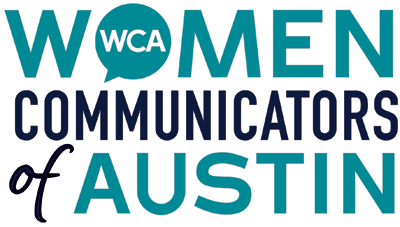 As Maura Nevel Thomas noted during November’s Freelance Austin meeting, “Empowered Productivity: Win the War Against Information Overload,” most of us start our days simply by looking at what’s in front of us. But according to Maura, if our goal is to increase productivity and reduce stress, that’s all wrong.
As Maura Nevel Thomas noted during November’s Freelance Austin meeting, “Empowered Productivity: Win the War Against Information Overload,” most of us start our days simply by looking at what’s in front of us. But according to Maura, if our goal is to increase productivity and reduce stress, that’s all wrong.
Instead, she advocates for a system. “When we apply a system, everything gets easier and more efficient,” she explains. Maura has designed the Empowered Productivity System, which she says puts people in the driver’s seat of their own journeys – both professional and personal.
But a system is only as successful as the actions people take, and intentions are meaningless. “Action is the key to success,” she says. “Thinking and wanting it is not the same thing as DOING it.”
The Value of Tools and a Methodology
Before you take action, understand that the formula for productivity involves having the right tools and a methodology. Maura likens it to sports. “If, for example, you have the same set of golf clubs as your favorite golf pro, does that mean you play the same as she does?” Nope! The tool matters less than how you use it.
Bottom line: “If you don’t have the right tools and the right methodology, you won’t be productive,” Maura explains.
Avoid the “Lion Tamer Syndrome”
Sometimes we have so much on our plates that we can’t figure out what’s most important. “Often what is loudest in your mind gets the attention, but often it’s not the most important thing,” Maura says.
Maura equates this experience to a lion tamer. When a lion tamer goes into a cage, she brings a whip and a chair and holds the chair by its seat while pointing the chair’s legs at the lion.
When the lion focuses its attention on all the legs moving toward him at the same time, he gets overwhelmed and retreats instead of taking action.
“When we sit down at our desk and have a million things going on, we are the lion. We cannot prioritize when we have so many things going on in our brains,” Maura explains.
Get Organized the Right Way
Like the lion, we are distracted. We use multiple methods of organizing our thoughts – paper notebooks, stickie notes, calendars, and apps – to keep ourselves on track. Maura recommends that we find a singular organizational system that works for us.
First, she identifies common ways that people organize:
- Alphabetically
- Size (for example: nesting bowls, books on shelves)
- Location (pots and pans in kitchen, laptop and printer in office, etc.)
- Time (Many of us learned at an early age to organize our lives by time and end up later being a slave to our calendars)
“If you are organizing things by time that don’t have a relationship with time, you have a contorted relationship with the tool, and it will be easy for things to slip through the cracks,” she says.
Maura thinks there is a better way to organize: categorically.
Keeping tasks in multiple places is inefficient and unproductive. “Similar to a jigsaw puzzle, you wouldn’t keep pieces in different rooms. You would put all the pieces in one place,” Maura says. Because our brains organize categorically, Maura recommends this organizational system, but she notes that “the categories matter.”
Often people do not choose the most useful categories, but Maura recommends two that she finds most useful:
- Next Actions: Items on Maura’s “Next Action” list are single-step activities where you have all the information you need to do them, ideally in one seating. For example, Maura has written three books. When she gets her editor’s comments, she cannot incorporate all the edits in one seating since they cover an entire book. “If I had to do them all at once, it would take me too long,” she says. When she has a Next Action like this that is all-encompassing, she breaks it down into 30-minute chunks. “The hardest part of anything is beginning so you want to make it as easy as possible to get started,” she says. On her Next Action list, she also recommends using action words and being as specific as possible. For example: “create a doodle poll” is more likely to incite action than “organize the meeting” and same with “google tech companies in Austin” over “research clients.”
- Waiting For: This list comprises things that need to get done, but they require something outside your control to happen before you can do them. Make a note about the due date and, if you don’t hear back, follow up. Doing this allows you to “clear your brain for the time being and forget about the task for now,” Maura says.
These are just two of her favorite categories for productivity, and Maura goes into greater detail in her book, From To-Do to Done.
In concluding the session, Maura reminded the audience:
- Your system allows you to prioritize.
- Your plans might go out the window, but the fact that you have a plan makes changing it easier.
- Your productivity system, how you store and manage and execute on things that are most important to you, “is the bridge that takes you from reaction and distraction to intention and choice.”
More information
Productivity Training | Time Management | Attention Management (maurathomas.com)
Maura has a new 3-part series of “one-hour read” books to help you tackle your attention, to-do list and inbox. Check them out here:
- Event Recap: Turn Adversity into Your Superpowers - February 27, 2022
- Event Recap: Everything You Need to Know about Pricing - January 25, 2022
- Event Recap: From Distraction to Intention - November 18, 2021
